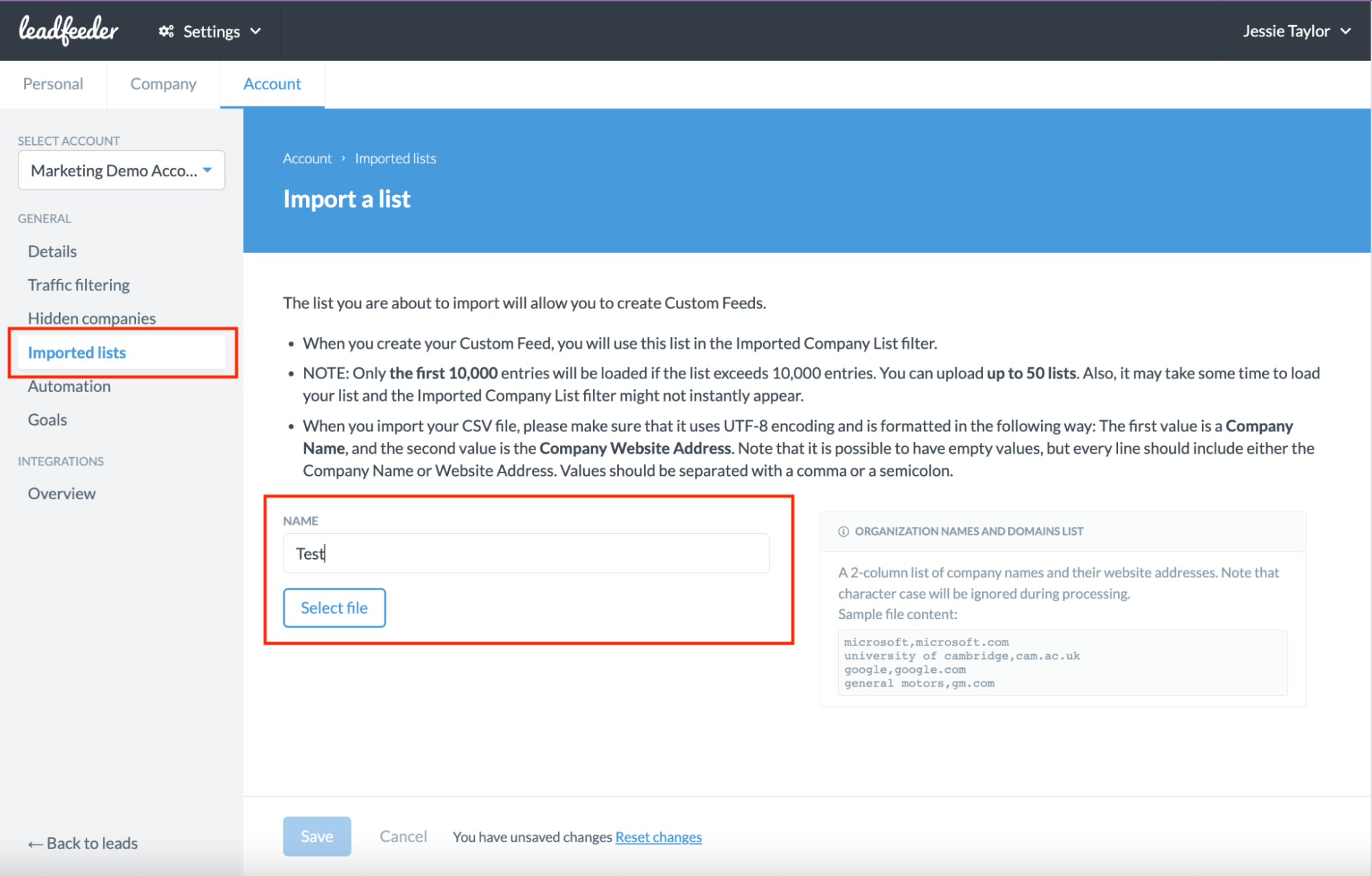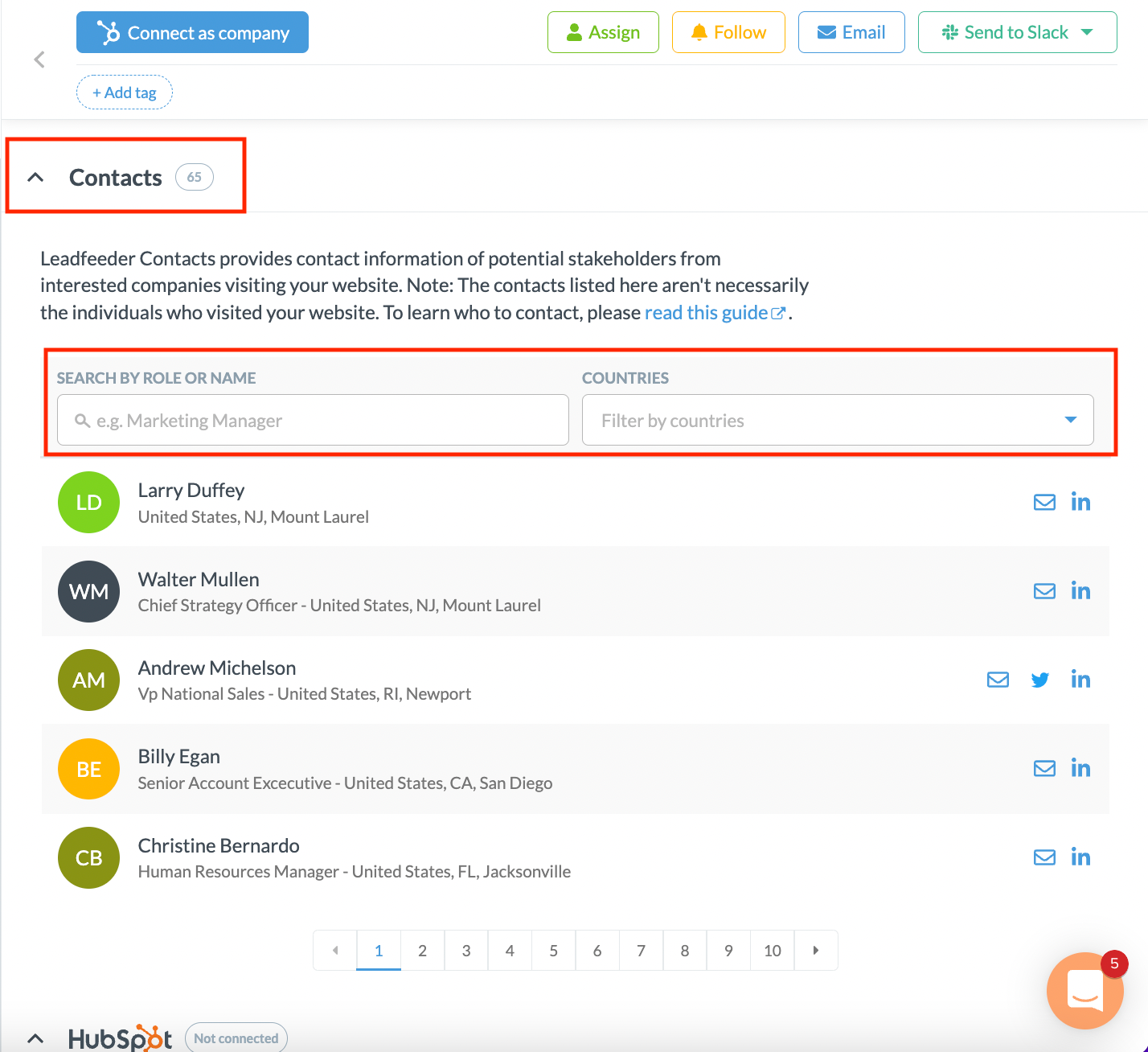How Leadfeeder Uses Intent to Guide Sales Outreach

Intent data is one of the (many) buzzwords making the rounds in marketing circles. You've probably heard it; you might even know what it means.
But how do you actually use it? (And, more importantly, where do you get it?)
I'm going to show you exactly how to leverage intent data to improve your sales outreach and save time by walking you through the exact process the Leadfeeder team has used to consistently grow revenue 80 percent year over year.
Build your target account list the right way
Your target account list is the most crucial part of your sales process. This is a list of who you want to sell to and who you don't want to sell to.
At Leadfeeder, we start with demographic and industry data.
For example, our target audience is:
- Medium to enterprise-level companies — specifically IT/Internet services, marketing, and other B2B businesses
- Located in the US and Europe
- B2B marketing and sales team members (fun fact: 50-70% of the Leadfeeder closed sales deals are championed by a marketer)
- A sales team between 2-10+ people
The details are endless, so I’ll spare you the rest.
To create our sales target list, we use tools like LinkedIn Sales Navigator, Hunter, G2, and Leadfeeder, of course.
If your target list is too small at this point, look to expand the specifics of your Ideal Customer Profile (ICP). For example, a larger geographical location, wider revenue bandwidths, etc.
If the list is too large, you'll want to break the list down into tiers.
At Leadfeeder, we generally break down target accounts by revenue — companies with bigger annual revenue tend to have more traffic, which means more revenue. Those accounts are ones we can spend a bit more time converting.
However, this doesn't mean you only want to focus on high-revenue customers. The goal is to focus on leads that are most likely to convert—which is why buyer intent matters. We'll get to that in a second!
Align sales outreach with marketing campaigns
Once you've narrowed down your target account list and tiered them, it's time to make sure your marketing campaigns align with the type of accounts you want to attract. How do you make that happen?
Start by ensuring your sales and marketing teams are aligned. For the Leadfeeder team, that means:
- Using fewer tools – There are a lot of tools out there, each with its own database and metrics. The problem is sales and marketing could be looking at very different data. That makes it hard to work together.
- Having more productive meetings – Nobody wants more meetings, but they're essential to aligning sales and marketing. Consider having a sales member attend a marketing meeting and vice versa. You don't have to meet five times a week to share new initiatives.
- Making sure metrics match up – The differences between a sales-qualified lead and a marketing-qualified lead can cause huge issues. Make sure both teams are on the same page when it comes to lead qualification.
Before launching a marketing campaign, we always show the sales team and ask—does this content or ad match your target accounts? Are there topics or pain points that we’re missing?
Identify prospects with intent
The days of a scattershot sales approach are over. Buyer intent allows teams to focus on target accounts that have indicated they're ready to buy.
Once you have your target list, use your CRM to track touchpoints and Leadfeeder to track website behavior. Start by importing your list into Leadfeeder (or your CRM).

Once the list is imported, you can create custom feeds in Leadfeeder to filter by specific behavior or demographics, for example:
- Accounts that visit high-intent pages, such as your pricing page or demo page
- Accounts that visit more than X times; we usually look for four to five visits from the same company
- Accounts in a specific location, revenue band, or industry
- Accounts from specific campaigns, such as a Facebook ad, Google Ad, or organic search
The best way to find strong intent is to add multiple actions in a single filter, such as accounts in the locations we target, in the right industry, read two or three blogs, and visited our pricing page.
Other buyer intent data tools include Bombora, Kickfire, and even G2. For example, on G2, you can look up competitors and find accounts that aren't happy with their current provider and see if they fit your target audience—a savage tactic, but companies do it.
Remember that first-party intent data (i.e., information from your website) is always better than third-party data, which could be inaccurate (and available to your competitors).
Personalize sales outreach to key contacts
The next step is to identify the ideal contacts within the buying committee and personalize your outreach to get a response. The average B2B sales cycle is getting longer—between six and twelve months for most companies. Plus, there can be anywhere from one to twelve people involved in the buying decision.
That makes contacting the right person crucial. Luckily, there are several tools to help you find the right contact information. In Leadfeeder, we offer a list of possible contacts—but that is just a starting point.

You can also search the company on LinkedIn and find users in the right role. Once you identify the right prospect to target, you can find their email address using Hunter’s Email Finder.
Once you know who to target, start compiling information from places like LinkedIn and G2 to understand prospects and the challenges they face better.
Did they recently get a new round of funding, or have they mentioned struggling to get more leads on LinkedIn? Even more personal information like a new house or adopting a puppy can help build a connection with a prospect.
Or, if you want to be nonchalant, try joining groups they’re in and interacting with their social media posts.
Bonus tip: Align with marketing on account-based retargeting
There's another benefit to aligning sales and marketing more closely—when both teams know what the other is up to, they can continue to work together after handing off leads.
For example, the Leadfeeder marketing team creates feed filters for accounts the sales team is currently targeting. When someone from that company visits the site, we can create retargeting campaigns to keep engaging with them.
Let's say marketing notices that an account sales has already reached out to has returned to our website and viewed a specific type of content. Marketing can use that insight to create retargeting campaigns that mention the content they've viewed or conversations they've had with the sales team. (This is where your CRM comes in handy!)
Benefits of using intent to guide sales outreach
Leveraging intent data has been crucial to Leadfeeder's growth. In recent years, we've grown from a small startup to a leading software company with more than 60,000 customers and 150+ employees across the globe.
Is this strategy right for your brand? If you want to spend less time chasing low-quality leads and more time closing deals, then the answer is yes.




 Send cold emails with Hunter
Send cold emails with Hunter